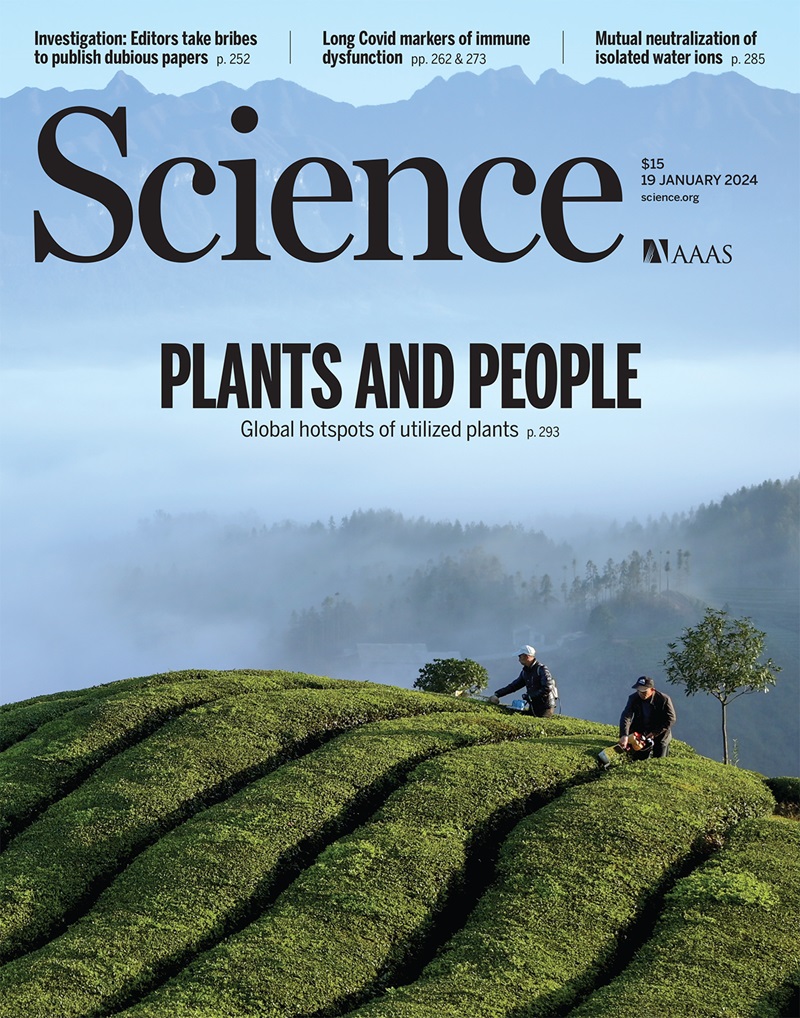Electric double-layer synthesis of a spongelike, lightweight reticular membrane
IF 44.7
1区 综合性期刊
Q1 MULTIDISCIPLINARY SCIENCES
引用次数: 0
Abstract
Electrochemical polymer synthesis usually forms dense films bound to the electrode. We report a single-step synthesis of large-area, ultrathin (~70-nanometer) polymeric membranes with a luffa-like, reticular cross-linked network with low density (0.5 grams per cubic centimeter). This particular membrane forms within an electric double layer in water constructed by voltage application without supporting electrolytes—in which deprotonated resorcinol and an aldehyde react three-dimensionally with a self-termination mechanism—and is spontaneously released when the voltage bias is removed. Initially rigid with a Young’s modulus of 8.9 gigapascals, this membrane reversibly regains flexibility (0.5 gigapascals) upon wetting and can be used as a large-area membrane for separations. Its shape-persistent carbonization made it possible to yield ultrathin (~22-nanometer) nanoporous carbon membranes.
电双层合成的一种海绵状、轻质网状膜
电化学聚合物合成通常形成与电极结合的致密薄膜。我们报道了一种大面积超薄(~70纳米)聚合物膜的单步合成方法,该聚合物膜具有丝瓜状网状交联网络,密度低(0.5克/立方厘米)。这种特殊的膜在水中的双电层中形成,在没有支持电解质的电压作用下形成,其中去质子化间苯二酚和醛以自终止机制进行三维反应,并在电压偏差消除时自发释放。这种膜最初是刚性的,杨氏模量为8.9千兆帕斯卡,在湿润后可可逆地恢复弹性(0.5千兆帕斯卡),可以用作大面积分离膜。它的形状持久性碳化使超薄(~22纳米)纳米多孔碳膜成为可能。
本文章由计算机程序翻译,如有差异,请以英文原文为准。
求助全文
约1分钟内获得全文
求助全文
来源期刊

Science
综合性期刊-综合性期刊
CiteScore
61.10
自引率
0.90%
发文量
0
审稿时长
2.1 months
期刊介绍:
Science is a leading outlet for scientific news, commentary, and cutting-edge research. Through its print and online incarnations, Science reaches an estimated worldwide readership of more than one million. Science’s authorship is global too, and its articles consistently rank among the world's most cited research.
Science serves as a forum for discussion of important issues related to the advancement of science by publishing material on which a consensus has been reached as well as including the presentation of minority or conflicting points of view. Accordingly, all articles published in Science—including editorials, news and comment, and book reviews—are signed and reflect the individual views of the authors and not official points of view adopted by AAAS or the institutions with which the authors are affiliated.
Science seeks to publish those papers that are most influential in their fields or across fields and that will significantly advance scientific understanding. Selected papers should present novel and broadly important data, syntheses, or concepts. They should merit recognition by the wider scientific community and general public provided by publication in Science, beyond that provided by specialty journals. Science welcomes submissions from all fields of science and from any source. The editors are committed to the prompt evaluation and publication of submitted papers while upholding high standards that support reproducibility of published research. Science is published weekly; selected papers are published online ahead of print.
 求助内容:
求助内容: 应助结果提醒方式:
应助结果提醒方式:


